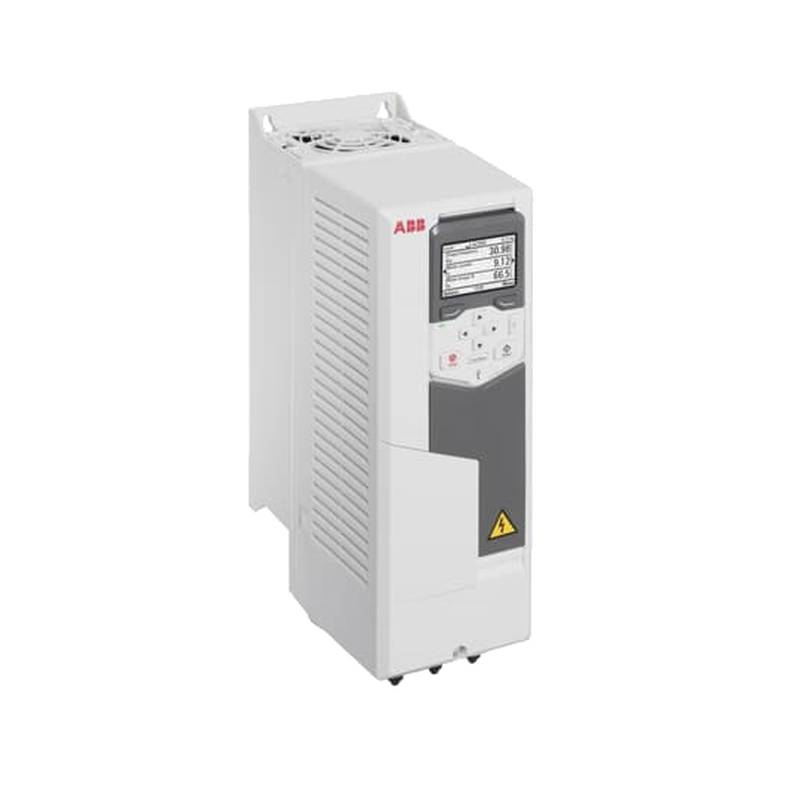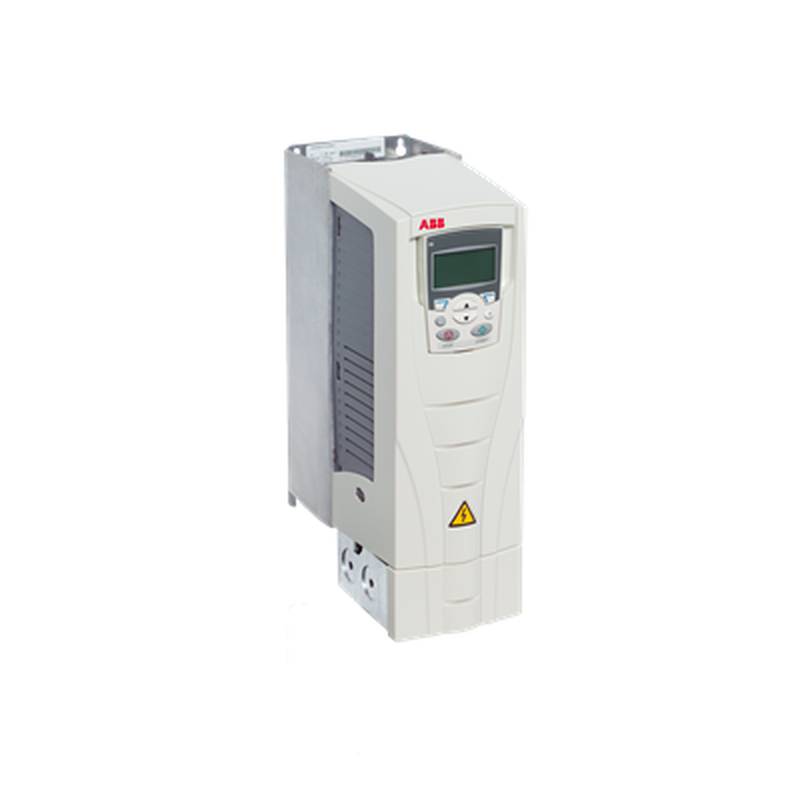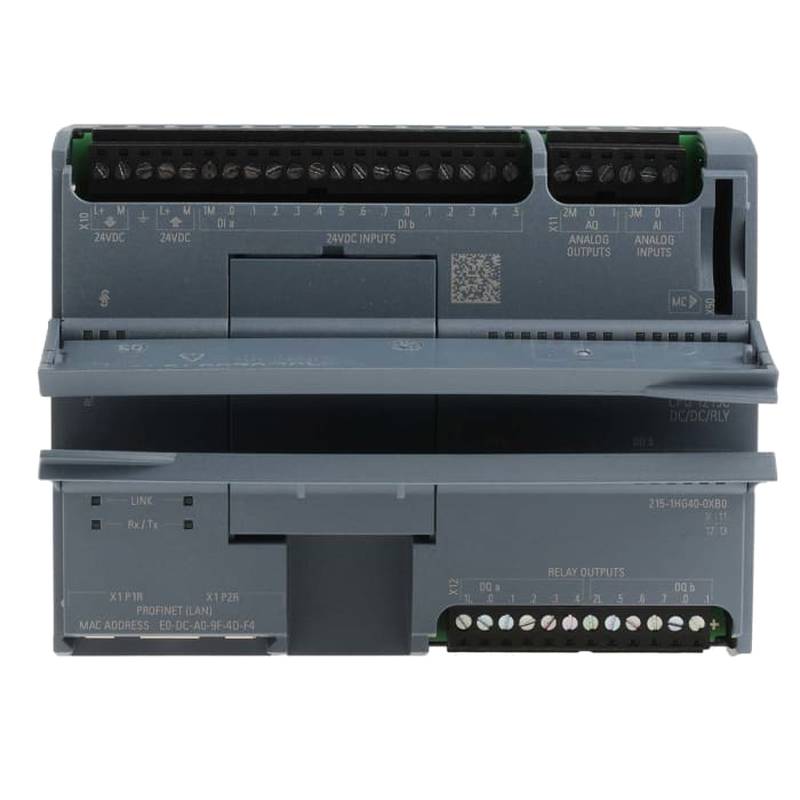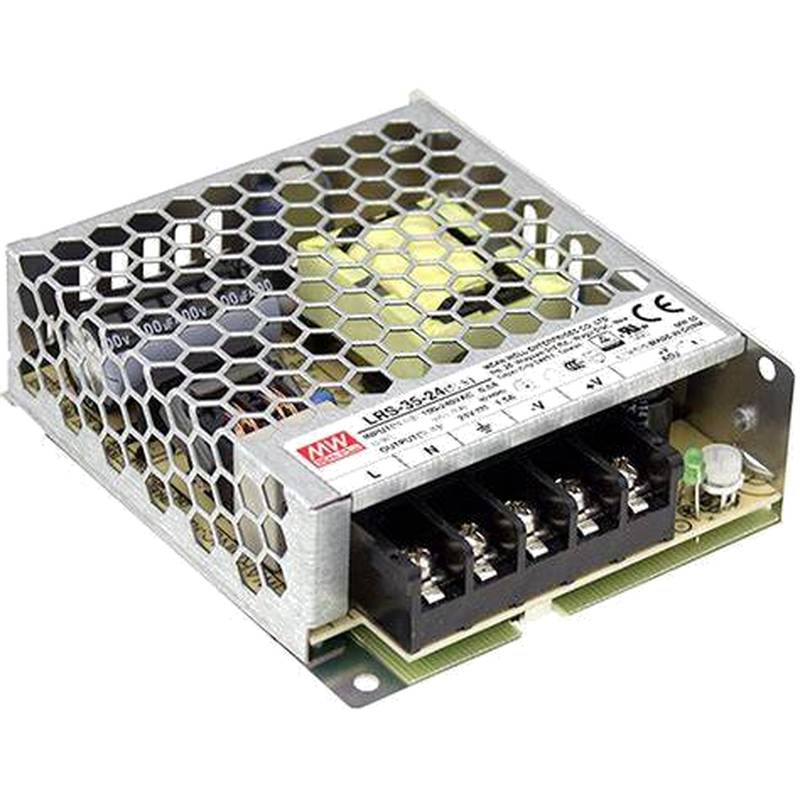
The Siemens 7KT1682 is a sophisticated industrial multi-function power meter designed for precise energy measurement and monitoring in demanding environments. Its core advantages lie in its comprehensive data acquisition capabilities, robust construction, and seamless integration into advanced power management systems. Key technical parameters include a wide operating temperature range from -25°C to +55°C, a voltage input range of 100-415V AC (L-N) and 173-720V AC (L-L), and a current input range of up to 10A directly or via external transformers. The device boasts an accuracy class of 0.2S for active energy and 0.5 for reactive energy, ensuring reliable and precise readings critical for billing, process optimization, and fault detection.
Product Specifications
| Parameter | Value |
| :--------------------- | :---------------------------------------- |
| Model | Siemens 7KT1682 |
| Operating Temperature | -25°C to +55°C |
| Voltage Input (L-N) | 100-415V AC |
| Voltage Input (L-L) | 173-720V AC |
| Current Input | Up to 10A (direct or via external CTs) |
| Active Energy Accuracy | Class 0.2S |
| Reactive Energy Accuracy| Class 0.5 |
| Communication | Modbus RTU, Modbus TCP, PROFIBUS DP |
| Display | Backlit LCD |
| Dimensions | 96 x 96 x 120 mm (DIN 43700) |
| Protection Class | IP51 (front), IP30 (terminals) |
| Mounting | DIN rail |
Core Features & Market Positioning
The Siemens 7KT1682 stands out in the industrial power metering market due to its advanced functionality and Siemens' reputation for quality and reliability. It offers simultaneous measurement of numerous electrical parameters, including voltage, current, power (active, reactive, apparent), frequency, power factor, and harmonics. This comprehensive data suite positions it as a premium solution for industrial facilities requiring granular insights into their energy consumption and power quality. Its support for multiple communication protocols like Modbus RTU, Modbus TCP, and PROFIBUS DP ensures interoperability with a wide range of SCADA, HMI, and building management systems, making it a versatile choice for both new installations and upgrades. The integrated LCD display provides immediate local readings, enhancing operational visibility.
Key Application Scenarios
This multi-function power meter is ideally suited for critical applications within manufacturing plants, data centers, utility substations, and commercial buildings. It excels in sub-metering and energy management for high-consumption areas, enabling precise cost allocation and identification of energy wastage. In industrial processes, the 7KT1682 is vital for monitoring power quality parameters, detecting anomalies that could lead to equipment damage or production downtime. For utility providers, it serves as a reliable revenue metering device, ensuring accurate billing for industrial clients. Furthermore, its harmonic analysis capabilities are essential for facilities with non-linear loads, such as those employing variable frequency drives or LED lighting, helping to maintain power system integrity.
Practical System Integration Guidance
Integrating the Siemens 7KT1682 into an existing or new industrial network is streamlined by its flexible communication options. For Modbus RTU, wiring involves connecting the A and B terminals of the meter to the corresponding terminals on the master device, typically over an RS-485 serial interface. Parameter configuration, including device address and baud rate, is accessible via the meter's front panel or through dedicated software. When using Modbus TCP, direct Ethernet connection to the network allows for IP-based communication, requiring configuration of the meter's IP address, subnet mask, and gateway. For PROFIBUS DP, connection to the bus requires appropriate cabling and termination, with configuration managed via the PROFIBUS master's GSD file. Initial commissioning involves verifying voltage and current inputs, setting the CT/VT ratios correctly, and establishing communication with the host system to ensure accurate data acquisition and reporting.
Operation and Risk Mitigation
Safe operation of the Siemens 7KT1682 mandates adherence to electrical safety standards. Before installation or maintenance, always de-energize the circuits and verify zero voltage. The meter is designed for panel mounting and requires proper wiring according to local electrical codes and the manufacturer's instructions. Terminal covers must be securely in place to maintain the specified protection class and prevent accidental contact. Common operational risks include incorrect CT/VT ratio configuration, leading to inaccurate measurements, or communication setup errors. Users should consult the device's manual for specific error codes or fault indicators, which can help diagnose issues such as communication timeouts, internal faults, or input signal problems. Regular visual inspection and functional testing can preemptively identify potential issues.
Scalability & Long-Term Value
The Siemens 7KT1682 offers significant scalability and long-term value, particularly within the context of Industrial IoT (IIoT) and digital transformation initiatives. Its diverse communication interfaces (Modbus TCP, PROFIBUS DP) facilitate straightforward integration into modern digital platforms, enabling remote monitoring, data logging, and advanced analytics. This allows organizations to build comprehensive energy management systems that can evolve with their needs. Compatibility with Siemens' broader portfolio of industrial automation and energy management solutions ensures a cohesive ecosystem. For facilities looking to enhance their operational efficiency and sustainability, the 7KT1682 provides a foundation for smart grid applications, predictive maintenance based on power quality data, and optimized energy procurement strategies, delivering a strong return on investment over its lifecycle.
FAQs
What are the primary advantages of the Siemens 7KT1682?
The Siemens 7KT1682 offers exceptional accuracy in measuring energy and power quality parameters. Its robust design ensures reliability in harsh industrial conditions, minimizing downtime. The meter supports multiple communication protocols, facilitating easy integration into diverse control systems.
This multi-functionality provides comprehensive insights for effective energy management. It enables precise billing, load balancing, and proactive fault detection within electrical networks. The device’s advanced features contribute to significant operational cost savings and improved system efficiency.
Its scalability allows for adaptation to evolving IIoT strategies and plant upgrades. This ensures long-term value and a strong return on investment for users focused on modernizing their industrial operations.
How is the Siemens 7KT1682 installed?
Installation typically involves mounting the meter on a standard DIN rail within an electrical panel. Ensure all power sources are disconnected before commencing any wiring procedures. Connect the voltage inputs to the appropriate phase and neutral or phase-to-phase terminals.
Connect current transformer (CT) secondary leads to the designated current input terminals. It is crucial to correctly configure the CT and VT ratios within the meter's settings to ensure accurate measurements. Adhere to all local electrical codes and safety regulations during the installation process.
Finally, establish communication by wiring the appropriate communication ports (e.g., RS-485 for Modbus RTU, Ethernet for Modbus TCP) to your control system. Once wired, power up the meter and verify its operational status and communication link.
What technical specifications are critical for the Siemens 7KT1682?
Critical specifications include its high accuracy class of 0.2S for active energy, ensuring precise billing and accounting. The wide voltage input range (100-415V AC L-N, 173-720V AC L-L) accommodates various grid configurations.
The operating temperature range of -25°C to +55°C is vital for its deployment in demanding industrial environments. Communication interfaces such as Modbus RTU, Modbus TCP, and PROFIBUS DP are essential for seamless integration with automation systems.
Other important parameters include its current input capability (up to 10A direct or via external CTs) and its robust build (IP51 front protection) suitable for industrial settings. These specifications collectively define its performance and application suitability.
Which communication protocols does the Siemens 7KT1682 support?
The Siemens 7KT1682 supports key industrial communication protocols for flexible system integration. It features Modbus RTU, a widely adopted serial communication protocol ideal for direct connections to PLCs and RTUs.
Additionally, it supports Modbus TCP, enabling communication over Ethernet networks for easier integration into modern IT infrastructures and SCADA systems. The meter also offers PROFIBUS DP compatibility, a robust fieldbus standard commonly used in industrial automation for high-speed data exchange.
This diverse protocol support allows the 7KT1682 to interface with a broad spectrum of automation hardware and software platforms. It ensures interoperability and facilitates its use in both legacy and cutting-edge industrial control architectures.
What types of electrical parameters can the Siemens 7KT1682 measure?
This multi-function meter measures a comprehensive array of electrical parameters essential for power management. It accurately records voltage, current, frequency, and power factor for each phase and in total.
It provides detailed measurements of active, reactive, and apparent power, enabling precise energy consumption analysis and billing. The device also monitors harmonic distortion (THD) up to the 40th harmonic, crucial for power quality assessment.
Furthermore, the Siemens 7KT1682 logs system demand, peak values, and can store historical data for trend analysis. This extensive measurement capability provides a complete picture of the electrical system's performance.
What is the accuracy class of the Siemens 7KT1682?
The Siemens 7KT1682 boasts an impressive accuracy class of 0.2S for active energy measurement. This high level of precision is critical for applications requiring exact energy accounting, such as revenue metering.
For reactive energy measurement, the meter provides an accuracy class of 0.5. This ensures reliable data for power factor correction and overall energy efficiency monitoring.
These accuracy classes underscore the device's suitability for demanding industrial and commercial applications where precise data is paramount for financial and operational decisions.
Can the Siemens 7KT1682 be used for revenue metering?
Yes, the Siemens 7KT1682 is highly suitable for revenue metering applications. Its high accuracy class of 0.2S for active energy ensures that energy consumption is measured precisely, which is a fundamental requirement for accurate billing.
The meter's ability to measure and record various power parameters comprehensively provides all the necessary data for energy accounting. This includes active and reactive energy in both import and export directions, which is vital for complex billing schemes.
Its robust design and compliance with relevant standards further enhance its reliability for revenue applications, offering peace of mind to both utility providers and industrial consumers.
What are the typical operating temperatures for this meter?
The Siemens 7KT1682 is designed to operate reliably across a wide temperature range. It can function effectively in environments with temperatures from -25°C up to +55°C.
This broad operating temperature capability makes it suitable for deployment in many industrial settings, including those that may experience significant temperature fluctuations. It ensures consistent performance regardless of ambient conditions.
This resilience to temperature extremes contributes to the meter's overall robustness and longevity in challenging industrial applications where other electronic devices might fail.
How does the Siemens 7KT1682 handle integration with IIoT platforms?
The meter's support for Modbus TCP makes it directly compatible with modern IIoT platforms that utilize Ethernet connectivity. This allows for seamless data exchange and remote monitoring via IP networks.
Its ability to report detailed power quality data also enhances IIoT applications by providing insights for predictive maintenance and system optimization. This data can be fed into cloud-based analytics engines for advanced trend analysis.
By leveraging these features, the Siemens 7KT1682 serves as a valuable data source for smart manufacturing, energy management systems, and other digital transformation initiatives.
What are the physical dimensions and mounting requirements?
The Siemens 7KT1682 has a standard panel-mounting form factor, measuring 96 x 96 mm according to DIN 43700. Its depth is approximately 120 mm, allowing for efficient use of space within electrical cabinets.
It is designed for DIN rail mounting, which is a common and convenient method for installing electrical components in industrial control panels. This ensures a secure and standardized installation process.
The front of the meter offers IP51 protection, safeguarding against dust and vertically falling water drops, while the terminals have IP30 protection, requiring proper enclosure for full environmental sealing.

























